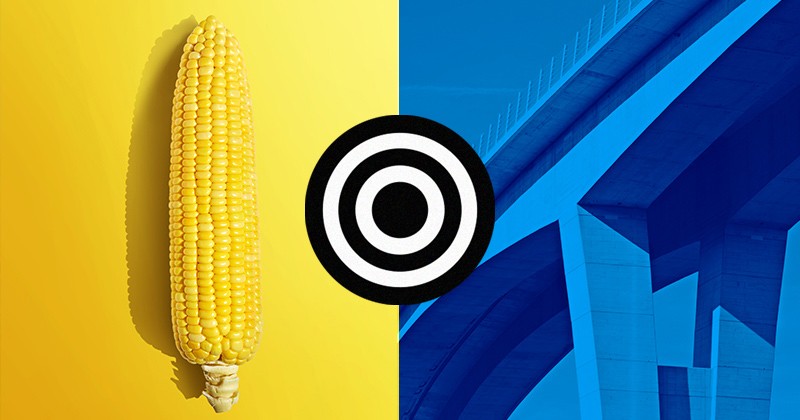How engineering principals support plant science
When Tropical Storm Isaias pummeled the East Coast in summer 2020, it created life-threatening tornadoes and weather conditions that ruined homes and flattened farm fields across Delaware. But in Newark, in a small field planted with different varieties of corn, one professor noticed that not all of the plants had the same damage.
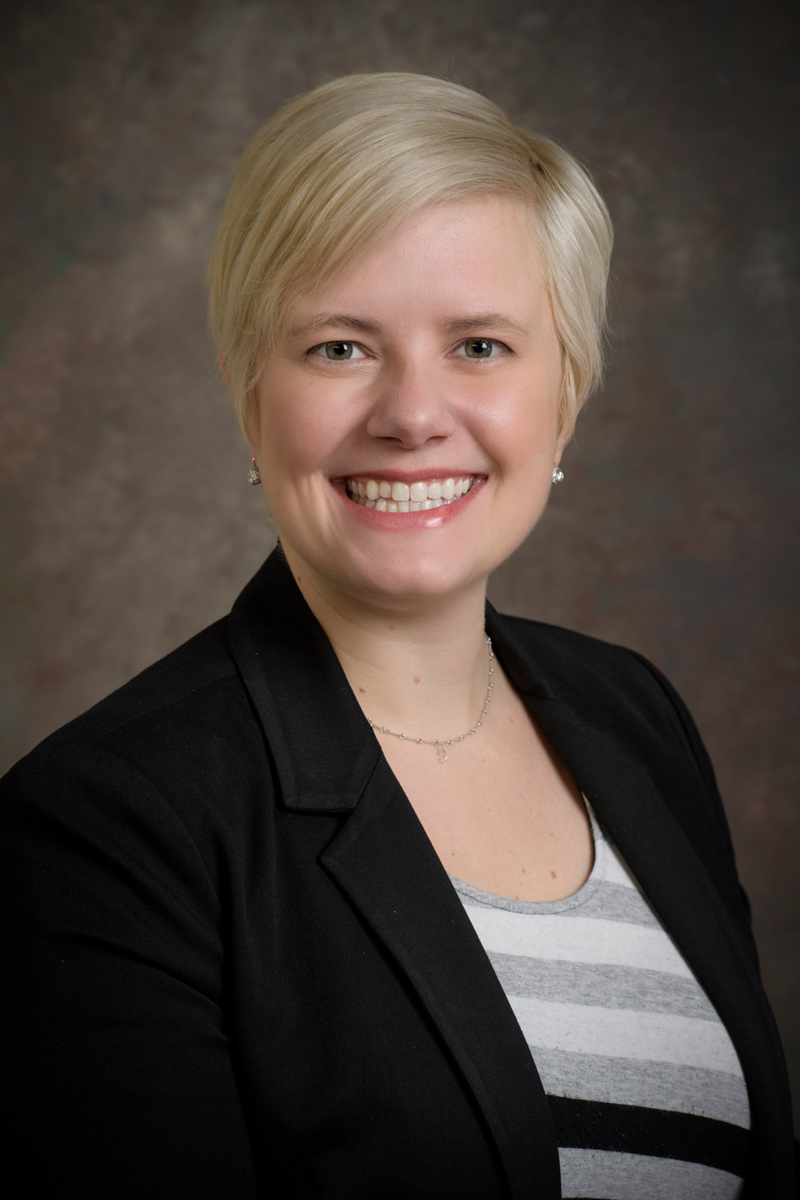
Erin Sparks is an assistant professor of plant molecular biology in the Department of Plant and Soil Sciences.
University of Delaware Assistant Professor Erin Sparks wondered: what allows some corn stalks to stay standing while others are knocked to the ground? The answer is complicated, but Sparks is getting much closer to understanding these plant mechanics thanks to an engineering-based approach typically used on manmade structures proposed by the College of Engineering’s Monique Head.
As associate professor and associate chair of the Department of Civil and Environmental Engineering, Head has been using advanced technology and digital image correlation (DIC) to understand and estimate how a building or bridge deforms — how it bends or flexes under the weight of cars on it or in the face of a large storm — without ever having to touch the structure itself. To do that, she utilizes high-resolution cameras that capture an immense amount of data, not unlike the equipment used by professional surveyors. Just like old-school movies, the equipment is used to take an immense amount of photographs that can then be pieced together, analyzed using complex DIC algorithms, allowing Head to see how structures shift over time due to various influences, such as wind or weight.
It took a few years for Head and Sparks to connect the dots between their work. After four shared events outside of the classroom, including one encouraging young female students to explore futures in science, technology, engineering and math (STEM), and hearing each other use so many similar descriptions as they spoke about their work, they saw clearly that they shared much more common ground than just being science-minded colleagues at UD. Sparks’ questions about corn and Head’s work with bridges were almost exactly the same: whether they were looking at concrete or plant material, they were both trying to quantify the object’s structural stability.

Monique Head is an associate professor and associate chair in the Department of Civil and Environmental Engineering.
“We realized we were trying to study the phenomenon of how or why things bend or flex,” Head said. “Moreso, we’ve done that with bridges. We wanted to see if we can do the same thing to quantify the response in corn and if we could use the same methodologies in a non-contact way.”
While the stakes may seem higher when someone is trying to pinpoint the weak points on a busy bridge so it doesn’t collapse, farmers also stand to lose a lot when an entire crop — their livelihood — is destroyed because the plants are broken or bent to the ground. And just as some bridge foundations may be difficult to reach, so are the underground root systems of plants like corn.
“People often think of plants as basically a rigid attachment to the ground and a stick,” said Sparks, who teaches plant molecular biology in UD’s College of Agriculture and Natural Resources. But that’s not the case at all, especially with corn plants, which have a complex above- and below-ground root system that is able to rotate and shift, she said.
“Dr. Head and her team, Shaymaa Obayes (doctoral student), Luke Timber (master’s student), and David Bydalek (2020 graduate), were able to take measurements of what’s actually happening as plants bend and flex, and translate this information into models,” Sparks said. That modeling approach cuts back on the amount of time needed working directly with the plants in the field, and allows researchers to explore infinite combinations of variables to better understand why the corn behaves the way it does.
With Head an experienced, tenured professor and Sparks a newer, untenured faculty member, they teamed up in 2020 and pursued funding for their interdisciplinary, collaborative work through UD’s Research Foundation Strategic Initiatives grants, which provided $45,000 in funding to support one doctoral student pursuing this work in Head’s lab.
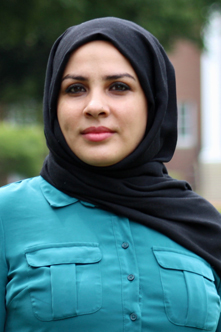
Shaymaa Khudhair Obayes is a civil engineering doctoral student.
But when Shaymaa Khudhair Obayes, a civil engineering doctoral student, first heard about working with corn instead of bridges, she wasn’t so sure how it would pan out.
“My master’s was related to the design of bridges, and I expected I’d work on bridges as well as I pursued my Ph.D.,” Obayes said, admitting that shifting her focus to corn was quite difficult at first. “It’s kind of like engineering from a different perspective.”
Applying what she knows about engineering theories and analysis to something new also boosted her confidence in her abilities as a professional, she said. Obayes already has a job in her home country, Iraq, but has many options for her future engineering career.
“At the end of my work, we learned we can apply all of the engineering theories to the corn and it works very well,” she said. “Now, if someone talks about the connection between agriculture and engineering, I already see the relationship between them and how we can use engineering to make improvements.”
A collaborative journal paper on their findings is submitted and expected to be published in the near future, Head said.
By using digital imaging, modeling and analysis tools, these researchers have been able to mimic how a corn plant’s stalk and root system could be represented with engineering mechanics, which Head said has not been done before with field measurements to support the analysis. From there, researchers can try to figure out what attributes caused a plant to stay upright or get knocked to the ground.
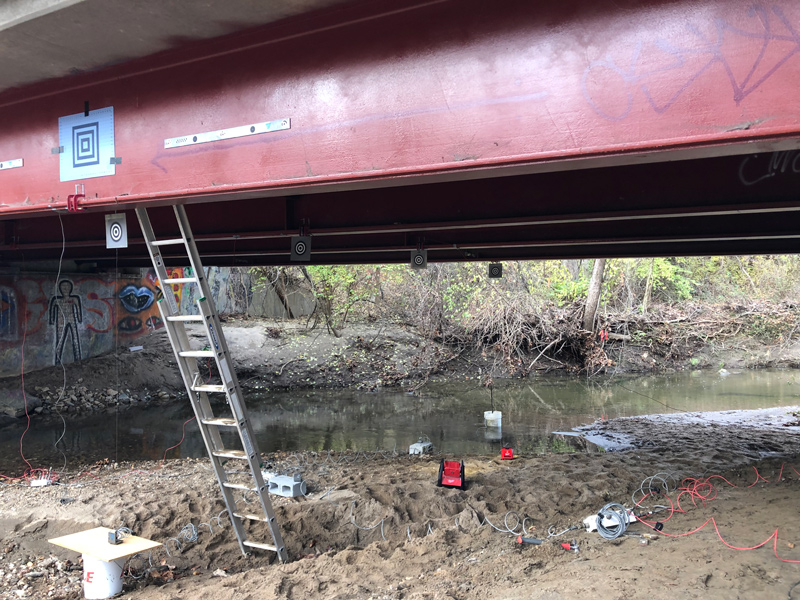
Engineers like Monique Head can learn a lot about the structural stability of a bridge without ever coming into contact with it thanks to structural monitoring techniques that include high-tech cameras and modeling.
“We can understand the science of why it’s doing what it’s doing,” Head said. “The monitoring enabled us to see things we wouldn’t be able to with the naked eye.”
Sparks said there’s a lot of interest from companies in trying to understand these characteristics, as well, when they’re breeding different varieties. Knowing exactly what could compromise a corn stalks’ ability to stand tall could lead to hardier plants and better yields for farmers, which would have a positive impact on agricultural-based economies. One company is even trying to figure that out with their own proprietary approach that involves a high-tech wind simulator that allows them to see how well their varieties stand up.
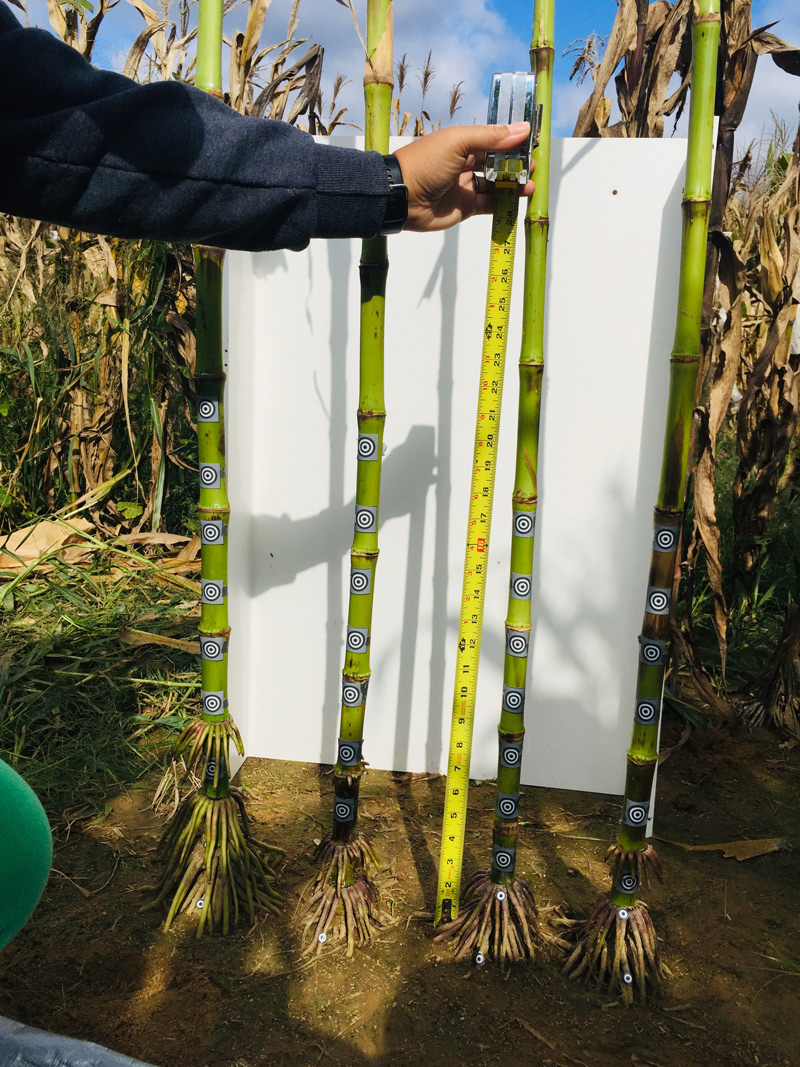
The same techniques used to understand how bridges withstand loads can be applied to corn as well, allowing researchers to better understand what characteristics help a plant stay standing while others get knocked over by wind, for example.
“We’re taking a deconstructed approach,” Sparks said. “That if we understand the architectures that lead to stability, then we don’t have to wait for a wind event to select for that. The next question for us is: how do those architectures interact with different soil types or with different management strategies?”
By scaling down engineering applications and models from a large bridge to a single corn stalk, they were also able to get incredibly fine measurements, down to 1/100 of an inch. That precision has allowed Head to update the models she uses for bridges, as well.
“That’s a really nice thing about collaborative research: You can see things from other people’s perspectives and really bring it together to something unique,” she said.
The work is inspired by nature, Head said, but in a way that is helping engineers and scientists better understand what is happening in order to then inform their equations and produce accurate, predictive modeling that would illustrate how specific situations — 50 mile per hour northeast winds, for example — would impact the object they’re studying. It’s also allowing them to take a more holistic approach to these mechanics and has raised questions about how variations in soil properties could be playing a key role in the stability of corn and built structures, as well.
Their work, which has spanned about two years after hitting delays due to the COVID-19 pandemic, has now opened the door to a wide breadth of future research for faculty and students at UD.
“We have more ideas than we can possibly manage at the moment,” Sparks said with enthusiasm. “I would call this foundational work, and now we’re going to be able to go in 30 different directions.”
| Photo courtesy of Colleges of Engineering and Agriculture and Natural Resources

